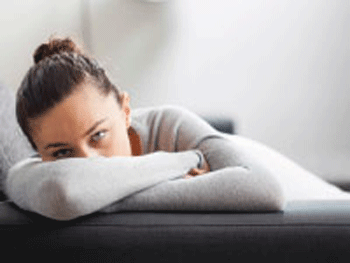Professional treatments are essential to addressing skin concerns and acne is no different. Most clients believe that going to the spa and doing a handful of treatments will clear their skin. While in-office treatments do improve the skin at an accelerated rate, it is not a one-shot answer to maintaining breakout-free skin.
Treatments are typically done six to 12 times a year and it is what the client is doing at home in their personal time the other 359 days of the year that are going to make the most difference and harness long-lasting results.
Acne cannot be cured, only managed, but it is likely that many acneic clients will have beautiful bouts of remission in their skin condition. Acne can – and will – come back and sometimes it is out of the client's control. It is also important to remember that acne, like a lot of skin conditions, takes patience and time and that lifestyle changes usually have to be made in order to get a long period of remission. That being said, there are also cases in which the client is being compliant, but results are taking longer to occur, so remember that this process takes time. Skin care professionals should be empathic and have a comprehensive, hands-on approach when treating this skin condition so that they can coach acneic clients through this period of time.
Treatment providers usually experience push back and non-compliance from their clients when someone is first being treated for acne. Instead of looking at the client's lack of compliance as a negative, be proactive and set the expectations and guidelines at the initial consultation. Have printed materials for the client to take home that highlights the dos and don'ts, lifestyle and dietary changes, as well as their customized treatment plan. This printout holds them accountable for their actions and also acts as a reference tool for them to look back on. Clients are not going to remember everything that was said to them in the consultation and they will not remember everything that was said to them during their treatment, so having a printout ready for them to take home is key to better compliance.
There are a variety of things that clients may be doing at home that can contributing to a lack of improvement in their skin condition.
1. Not Using Proper Homecare Products – Homecare is essential to acne clearance and remission. Tailoring a homecare plan for clients and bundling it into the cost of their first treatment is the best way to go about homecare. They will not get as quick or as good of a result if they are still buying over-the-counter products while getting professional treatments. These products can actually be contraindicated for the treatments professionals are providing to them, causing a bigger setback. Many skin care professionals choose to make it mandatory for clients to be on the spa's tailored homecare program before agreeing to treat the client in office.
2. Stress Management and Mental Health – This is a big factor and it is often overlooked; there is a direct correlation to anxiety, depression, and stress cropping up on the skin as acne. It is important to talk to clients and ask them questions about their mental health history and how they are currently feeling. Professionals are not psychologists, but skin conditions go hand-in-hand with mental illness and it is important to be there to lend a listening and compassionate ear, as well as to suggest ways the client can remedy them. Meditation is the best outlet for stress and can be anything that calms and relaxes the client. If acne is not clearing, stress is usually found as the culprit.
3. Hormonal Imbalance Going Unchecked – Having undiagnosed hormonal imbalances are another  instance where the factor is beyond the client's and professional's control, but it should be mentioned because it can also set back the recovery process. If acne is not clearing and the client is on proper homecare and has adapted to a healthy lifestyle, then suggest that they get their hormone levels tested. Hormonal acne cannot be cured and it cannot always clear up in the treatment room, but it can be managed. Usually, those with hormonal acne will need some type of hormone balancing therapy in order to get the best result.
instance where the factor is beyond the client's and professional's control, but it should be mentioned because it can also set back the recovery process. If acne is not clearing and the client is on proper homecare and has adapted to a healthy lifestyle, then suggest that they get their hormone levels tested. Hormonal acne cannot be cured and it cannot always clear up in the treatment room, but it can be managed. Usually, those with hormonal acne will need some type of hormone balancing therapy in order to get the best result.
4. Touching and Picking Their Face – Remind clients that picking and excessively touching their face will only do more harm than good. If extractions are absolutely necessary, remind them they should only be done by a professional in order to limit the chance of scarring and deeper infection. Some clients suffer from dermatillomania; a type of obsessive compulsive disorder where the person inflicts harm on their skin by picking it to the point of severe bleeding, often causing scarring. It is usually easy to spot this client as they will have open, deep sores covering their face and other parts of their bodies. Referral to a mental health provider is essential for these patients.
5. Unhealthy Diet – Diet and acne, as well as many other skin conditions, go hand-in-hand. This statement is not true for all clients, but those with sensitivities, food allergies, and gut health issues will see their skin clear up with a change in their diet. Talk to them about the foods that trigger inflammation, the onset of skin conditions, and why they should consider avoiding or limiting them.
6. Not Moisturizing – This factor is a heavy hitter and often overlooked. Most acneic clients do not think they need to hydrate their skin, so they strip it until they have no functioning barrier left. It is important to teach them that utilizing an oil-free moisturizer is essential to healing their skin and getting it back to functioning properly.
7. Excessive Sun Exposure – Antioxidants and sunscreen are needed for all clients, including those with acne. When all else fails, explain that these two ingredients are essential for fading post-inflammatory pigmentation and most clients will then understand the need and importance. Excess sun exposure also dries out the skin to the point that it produces excess oil to compensate and, in return, that oil sits under the dead, dried, sun-kissed skin and leads to a breakout later down the line.
8. Dirty Cell Phones and Pillowcases – Remind clients to clean their cell phones and change their pillowcases regularly.
 9. Heavy Makeup Use – Most acneic clients use a heavier amount of makeup because they are trying to cover their condition while treating it, but they do not realize that excess makeup often leads to more problems. Talk to them about switching to non-comedogenic and oil-free formulas and recommend brands for them to try. Better yet, carry that line in the spa so they can purchase it immediately.
9. Heavy Makeup Use – Most acneic clients use a heavier amount of makeup because they are trying to cover their condition while treating it, but they do not realize that excess makeup often leads to more problems. Talk to them about switching to non-comedogenic and oil-free formulas and recommend brands for them to try. Better yet, carry that line in the spa so they can purchase it immediately.
10. Lifestyle Habits – Drinking, smoking, drug use, and lack of sleep are just a few of the lifestyle habits that can be hindering the recovery process of acne. All of these factors cut down on the healing process of the skin, as well as exacerbate inflammation within the skin and body, so it should be mentioned and addressed.
Want to read more?
Subscribe to one of our monthly plans to continue reading this article.